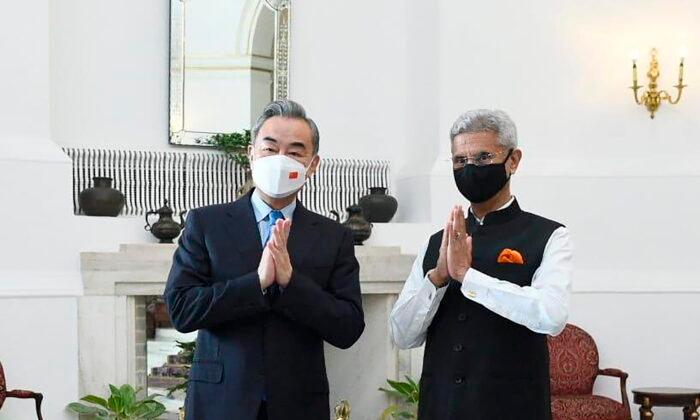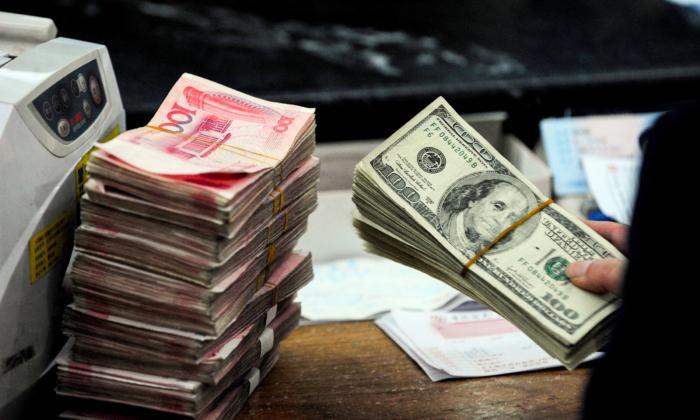After years of belligerence, China has begun to court India. Trade between the two countries has surged—clearly, an important trend for Beijing, which has already started to feel insecurities about its trade relations with Japan and the West. Though trade between China and India seems set to continue along its recent steep trajectory, closer relations face many difficulties.
Flows of imports and exports between China and India certainly have made startling strides of late. The aggregate of trade back and forth rose a tremendous 47 percent in 2021 alone. That is the tally according to the Indian Department of Commerce. Beijing’s statistics are only slightly less impressive. They record a 45 percent jump. Chinese exports to India rose 49 percent. Indian exports to China rose by considerably less but still a strong 21 percent.
China, with its export-driven growth model, is delighted. So is New Delhi, though many Indians have expressed concern about India’s widening trade deficit with China. In 2021 that deficit stood at the equivalent of $64.5 billion in the red, quite an increase over the $51.3 billion recorded only two years ago. Beijing has voiced a willingness to help India address the imbalance, but New Delhi is well aware that Beijing made similar assurances to the United States over many years to little effect.
India, meanwhile, has introduced a commitment to substitute for Chinese products by developing domestic competition for the finished goods that constitute the bulk of what China sells in India. Beijing is less than happy about that objective but sees it as a distant concern.

Making this turn in trade altogether remarkable is the history of hostility between these two nations. Both nations have for some 70 years remained at loggerheads over the so-called “Line of Actual Control” in the Himalayas. Indeed, there have been two major exchanges of fire along this line in just the last few years. In 2017, several died in the Poklam region, and in May last year, a similar thing happened in Ladakh.
There is also India’s extreme sensitivity to China’s close relationship with Pakistan, a rival of India’s since independence in the late 1940s. Indian sources quickly pointed out during a recent visit by Chinese Foreign Minister Wang Yi that he had not only participated in the Organization of Islamic Cooperation meeting in Islamabad but spoke of Kashmir, a major focus of Indian-Pakistani hostility. It will be difficult to overcome this history. Indicative is how none of the 70-some events planned in last year’s diplomatic outreach between India and China took place.
Despite all this history of hostility, the roots of China’s changed attitude are clear enough. It wants India to at least begin to substitute for important but recently threatened trade relationships China has with the West and Japan.
Early signs of trouble appeared in 2019 when the Trump White House imposed steep tariffs on Chinese imports, tariffs that President Joe Biden has kept in place. Indeed, Biden’s trade representative, Katherine Tai, continues to pressure China in ways not dissimilar to those of the Trump administration. Meanwhile, several bills circulating in Congress would restrict American sourcing in China and American investments in Chinese business. All this is a far cry from the general encouragement and forbearance shown by the Obama administration and that of George W. Bush before him.
The European Union (EU) has taken a less confrontational line than the United States, but here, too, China has encountered resistance to formerly welcoming trade relations. The EU has even set itself in a kind of competition with China’s Belt and Road Initiative (BRI, also known as “One Belt, One Road”). Canada has also shown resistance to growing trade relations with China, while Japan and Australia still chafe at Beijing’s high-handed approach to trade. Australia still faces steep tariffs just for seeking an investigation into the origins of COVID-19, while in 2010, Beijing, in anger over disputed islands in the East China Sea, temporarily cut off Japanese access to rare earth metals.
War in Ukraine has heightened China’s difficulties with these major trading partners. Washington, London, Brussels, Tokyo, and other powers that have imposed sanctions on Russia have accepted Beijing’s reluctance to join them, but they have noticed the continued growth in China-Russia trade. Washington and its allies have warned Beijing that it will suffer trade consequences on any hint that it is supplying Russia with arms or is helping Russia avoid sanctions. This warning from the West and Japan fuels Beijing’s desire to seek markets elsewhere, especially in India’s relatively large economy now that New Delhi has refused to join the sanctions regime against Russia.
Of course, India can in no way substitute for American, European, and Japanese markets. Even after the impressive improvement last year, total Chinese exports to India equaled $87.5 billion. That is nowhere near China’s $480 billion in exports to America last year or its $553.7 billion in exports to the EU. But in the circumstance, Beijing has a powerful incentive to cultivate all alternatives, especially those like India, where there is growth potential.
Both India and China sincerely want to improve trade further. China needs to reduce its vulnerability to increasingly suspicious Western and Japanese trading partners. India wants to broaden its economy and foster greater rates of economic growth. These desires—needs—may well overcome long-standing bad feelings and India’s desire to rectify trade imbalances. Still, it will take time and even longer for India to approach a substitute for any trade lost to China with Japan and the West.





